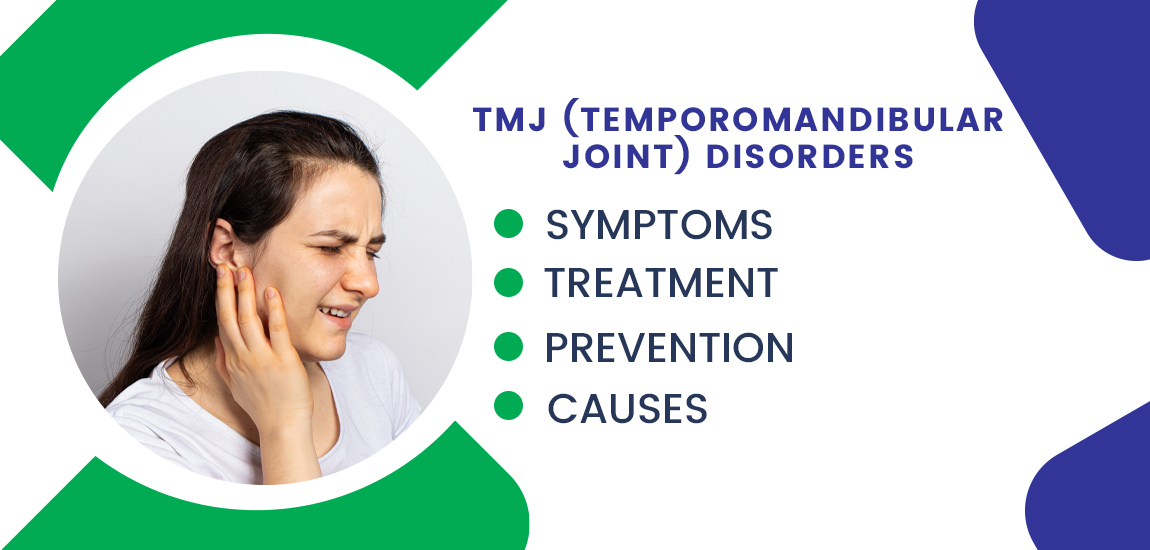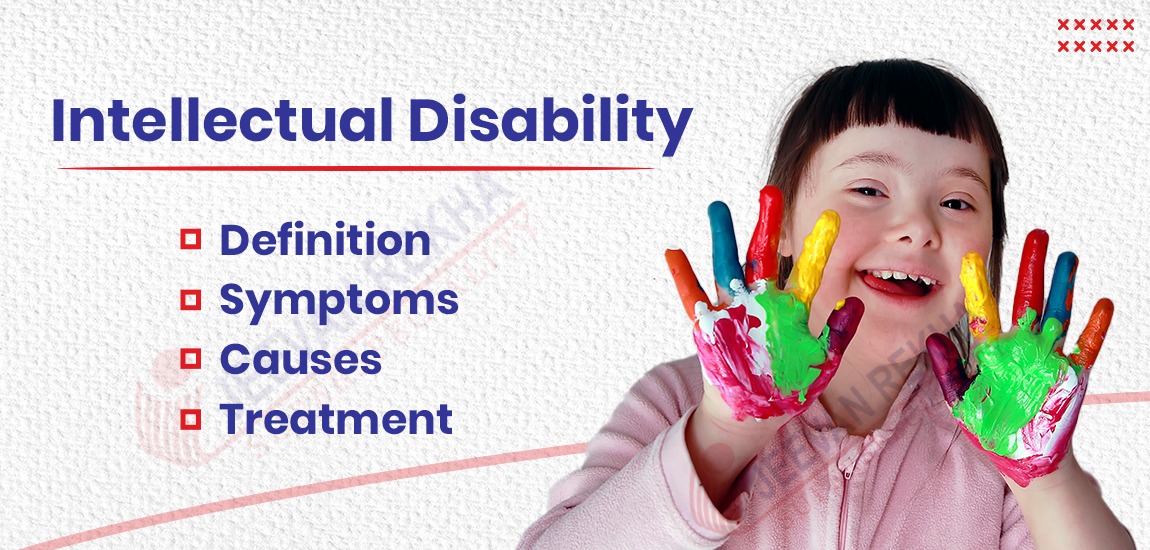
- By JRSH Admin
- In Health and Tips,
- Posted October 31, 2022
TMJ (Temporomandibular Joint) Disorders - Symptoms, Causes, Prevention, and Treatment
Disorders of the jaw joint and muscles controlling the jaw are known as TMJ disorders. The complex nature of this joint can make diagnosis and treatment difficult.
The number of people with TMJ disorders in the United States averages around 12 percent at any given time. More women suffer from severe pain and limited jaw movement than men, with nine women experiencing severe pain for every man.
Patients and doctors should be aware of what causes TMJ disorders, what the symptoms are, and what treatment options are available.
What are TMJ (Temporomandibular) Disorders?
Two joints connect the lower jaw and the skull called the temporomandibular joints (TMJ). Each joint rotates and slides in front of the ear, and it is made up of the lower jaw, mandible, skull base, or temporomandibular bone. The mandible can move upward, downward, and sideways within these joints, which are among the body's most complex joints.
If the mandible and joints are aligned correctly, you will have no pain when speaking, eating, swallowing, talking, or chewing. The alignment of these structures (disk, jaw bone, temporal bone, ligaments, and muscles) may cause a variety of problems, including pain and disease.
Several conditions affect TMJ in particular. There are various symptoms, each of which can cause discomfort differently. TMJ disorders are a broad category that encompasses a wide range of possibilities. Consequently, there are multiple treatment options available.
TMJ disorders may be diagnosed based on a variety of symptoms, such as persistent jaw pain and restricted jaw movement. TMJ disorders usually resolve themselves within two months, usually within a few weeks. The occurrence of some cases, however, may be ongoing or recurrent.
Symptoms of TMJ Disorders
TMJ disorders may cause the following signs and symptoms:
- A feeling of discomfort or soreness in the jaw (usually worse in the morning or late in the afternoon)
- Headaches
- Backache, shoulder pain, neck pain, and/or pain behind the eyes
- Infection of the inner ear canal does not cause earaches or ringing in the ears.
- Clicking or popping of the jaw
- Locking of the jaw
- Limited mouth motions
- Clenching of the teeth
- Dizziness
- Having sensitive teeth without any oral health conditions
- Intense tingling or numbness in the fingers
- Changes occur in the alignment of the upper and lower teeth.
Opening your mouth or chewing can also trigger a clicking sound or grating sensation caused by TMJ disorders. TMJ disorders don't cause pain or limit movement, so you probably won't need treatment if your jaw doesn't click.
What causes Temporomandibular joint (TMJ )disorder?
There are various causes of TMJ disorder, including injury to the jaw joints or surrounding tissues. Other causes of TMJ include:
- Bruxism (teeth grinding/clenching)
- Ball-socket joint disc dislocation
- Arthritis in the TMJ
- Stress
- Acute trauma
- An improper bite
How can TMJ be prevented?
Preventing TMJ problems is important to avoid pain and discomfort in the jaw when temporomandibular joint problems arise.
Preventing this pain can make a huge difference, as the adage goes, prevention is better than cure. You can prevent pain associated with TMJ by following these six simple tips.
- Destress – TMJ pain is frequently caused by stress. When people have high levels of stress, they often grind their teeth or clench their jaws, which can cause problems with their jaw and TMJ. The reduction of stress in your life can significantly reduce your chances of developing TMJ problems. Taking a long bath will help you relax. Get some exercise by walking or doing yoga. Massage is a great way to relax. Mediation might be useful. Taking some time to relax can help you let go of some stress in your life.
- Limit Chewing Gum – The temporomandibular joint and your jaw are subject to extra stress when you chew gum excessively. Whenever possible, swap your gum for a mint and give your jaw a break. Furthermore, do not consume too much taffy or other chewy candy.
- Practice Strengthening Exercises – Injury and inflammation are much less likely to occur in a strong jaw and the joints that surround it than in a weak jaw. By applying moderate pressure, try opening your mouth five to ten times while holding your thumb under your jaw. Using your finger between your chin and lower lip, push down on your chin while closing your mouth while pulling back against the pressure to strengthen the jaw in the opposite direction. By practicing these strengthening exercises daily, you can prevent contact arthritic pain in your TMJ.
- Proper Dental Care – Maintaining a rigorous oral health routine and regular dental checkups can help prevent TMJ by preventing cavities, maintaining tooth alignment, and limiting inflammation, all of which can contribute to it.
- Eat More Soft Foods – The chances of avoiding TMJ pain can be greatly improved by eating softer foods instead of crunchy or chewy foods. You should also chew on both sides of your mouth while eating instead of always chewing on one.
- Practice Good Posture – When your posture is poor, it can lead to TMJ pain due to jaw misalignment, which can be affected by the way you sit and stand. Keep your head straight and don't lean forward too much whenever you watch TV, use a computer, or scroll on your phone.
How are TMJ disorders diagnosed?
There are a variety of disorders associated with TMJ. It is difficult to diagnose most of the disorders that fall under that heading with standard tests. If your doctor suspects that you have an ear, nose, and throat condition, he/she will refer you to either a dentist or an ENT specialist.
You may be examined by a healthcare professional to determine whether there is swelling or tenderness in the area. Additionally, they may perform several different imaging tests.
These can include:
- X-rays. As your dentist moves an imaging machine around your head, you bite down on a small mouthpiece and your jaw is X-rayed. By seeing your teeth and bones in and around your jaw, your dentist will be able to determine where your teeth should be placed.
- CT scan. Your doctor can see the joints and bones of your jaw more clearly with a CT scan than he or she can with a regular X-ray.
- MRI. When an MRI is performed on the jaw, it can reveal if there are any problems with its structure. MRIs, use a magnetic field to show detailed images of organs and tissues, and the magnetic field is used to reveal detailed images of organs and tissues.
How are TMJ disorders treated?
TMJ disorders may go away on their own in some cases without treatment. Depending on the severity of your symptoms, your doctor may recommend a combination of treatments, often more than one at once.
Medications
These medication options may help relieve pain associated with TMJ disorders when combined with other nonsurgical treatments:
- Pain relievers and anti-inflammatories. A doctor or dentist may prescribe prescription-strength ibuprofen for a limited period if over-the-counter pain relievers are not effective for treating TMJ pain.
- Tricyclic antidepressants. Amitriptyline and other similar medications are mostly used to treat depression, although they are also sometimes prescribed to treat pain, control bruxism, and assist with sleep disorders in low doses.
- Muscle relaxants. Muscle spasms caused by TMJ disorders are sometimes relieved with these drugs for a few days or weeks.
Therapies
Non-drug therapies for TMJ disorders include:
- Oral splints or mouth guards (occlusal appliances). Many times, wearing a hard or soft device implanted over their teeth will help persons with jaw pain, but the reasons why these devices are helpful are not fully understood.
- Physical therapy. Treatments could involve ultrasound, moist heat, and ice in addition to exercises to stretch and strengthen jaw muscles.
- Counseling. You can learn about the things and actions that might make your pain worse so that you can avoid them with the use of education and counseling. Examples include chewing your fingernails, leaning on your chin, or clenching or grinding your teeth.
Surgical or other procedures
When alternative remedies are unsuccessful, your doctor could advise surgeries like:
- Arthrocentesis. A minimally invasive treatment called arthrocentesis involves inserting tiny needles into the joint to irrigate fluid into the joint to flush out debris and inflammatory byproducts.
- Injections. Injections of corticosteroids into the joint may be beneficial in certain individuals. Botulinum toxin type A (Botox, others) injections into the chewing muscles might occasionally reduce discomfort brought on by TMJ issues.
- TMJ arthroscopy. In some instances, arthroscopic surgery can be just as successful as open joint surgery in treating different forms of TMJ issues. An arthroscope is then inserted through a short, thin tube (cannula), and small surgical instruments are utilized to do the surgery. TMJ arthroscopy has various restrictions but fewer risks and problems than open joint surgery.
- Modified condylotomy. Modified condylotomy, which involves surgery on the mandible but not the TMJ, treats the joint indirectly. If you feel like locking or need pain relief, it might be useful.
- Open-joint surgery. Your dentist or doctor may advise open joint surgery (arthrotomy) to repair or replace the joint if your jaw pain does not go away after trying more conservative therapies and looks to be brought on by a structural issue in the joint. However, after weighing the advantages and disadvantages, open-joint surgery should be carefully examined because it carries more risks than other operations.
Tags
Blog Search
Latest Posts
-
Dark Circles Under The Eyes: Causes, Home Remedies and Treatments
December 21, 2025 -
बर्ड फ्लू के लक्षण, कारण, उपचार और बचाव के उपाय जानें
December 04, 2025 -
Best Diet Plan for Menopause Weight Management
November 25, 2025 -
Pulmonary Fibrosis Treatment: Understanding Lung Scarring and Breathing Problems
November 21, 2025 -
Arrhythmia: Types, Causes, Symptoms, and Treatment
November 07, 2025




